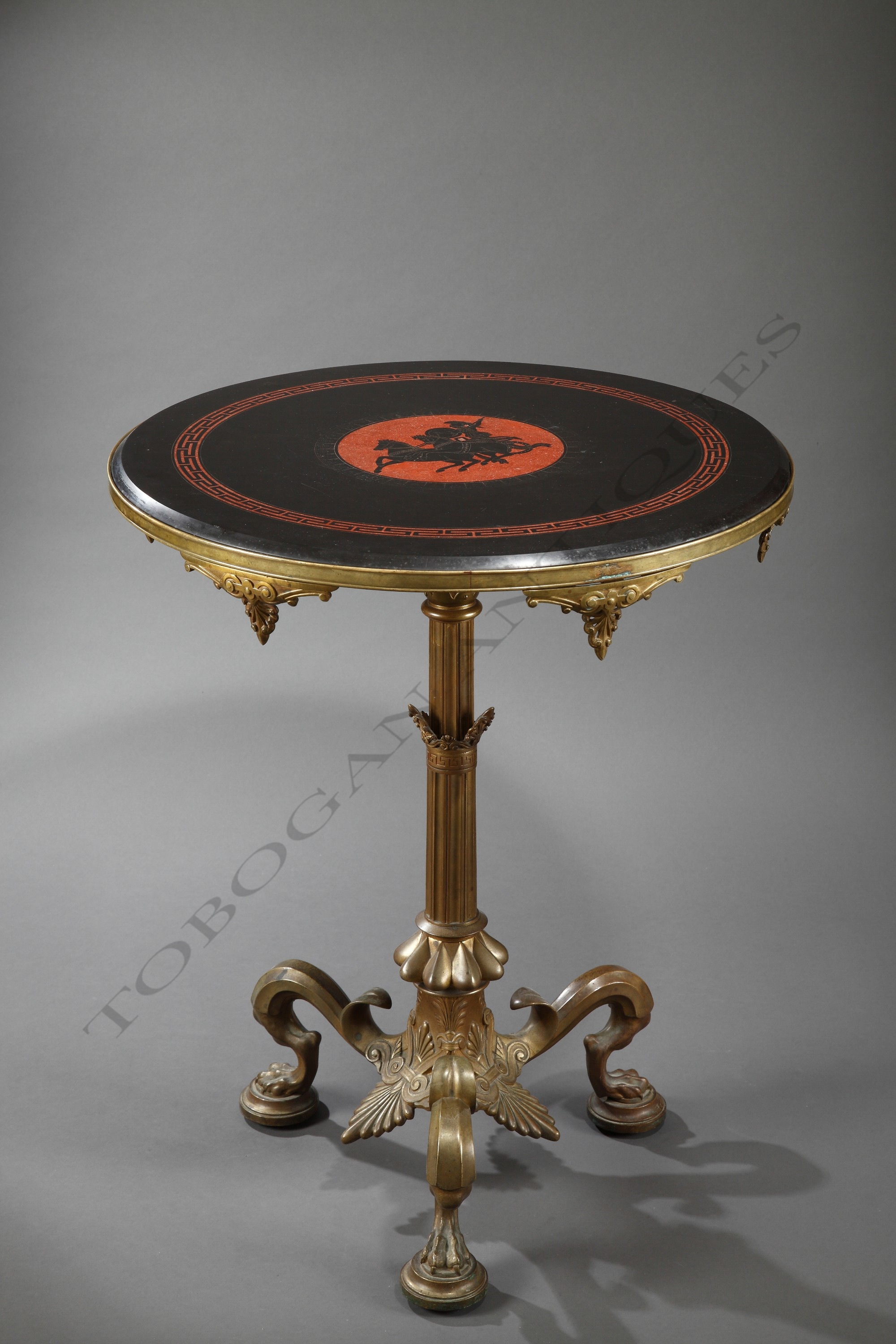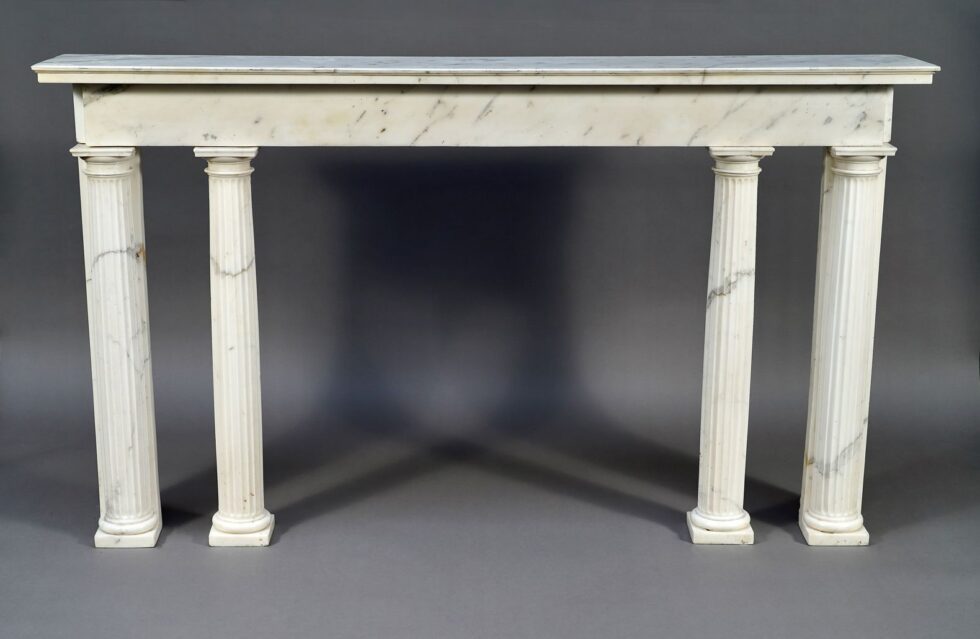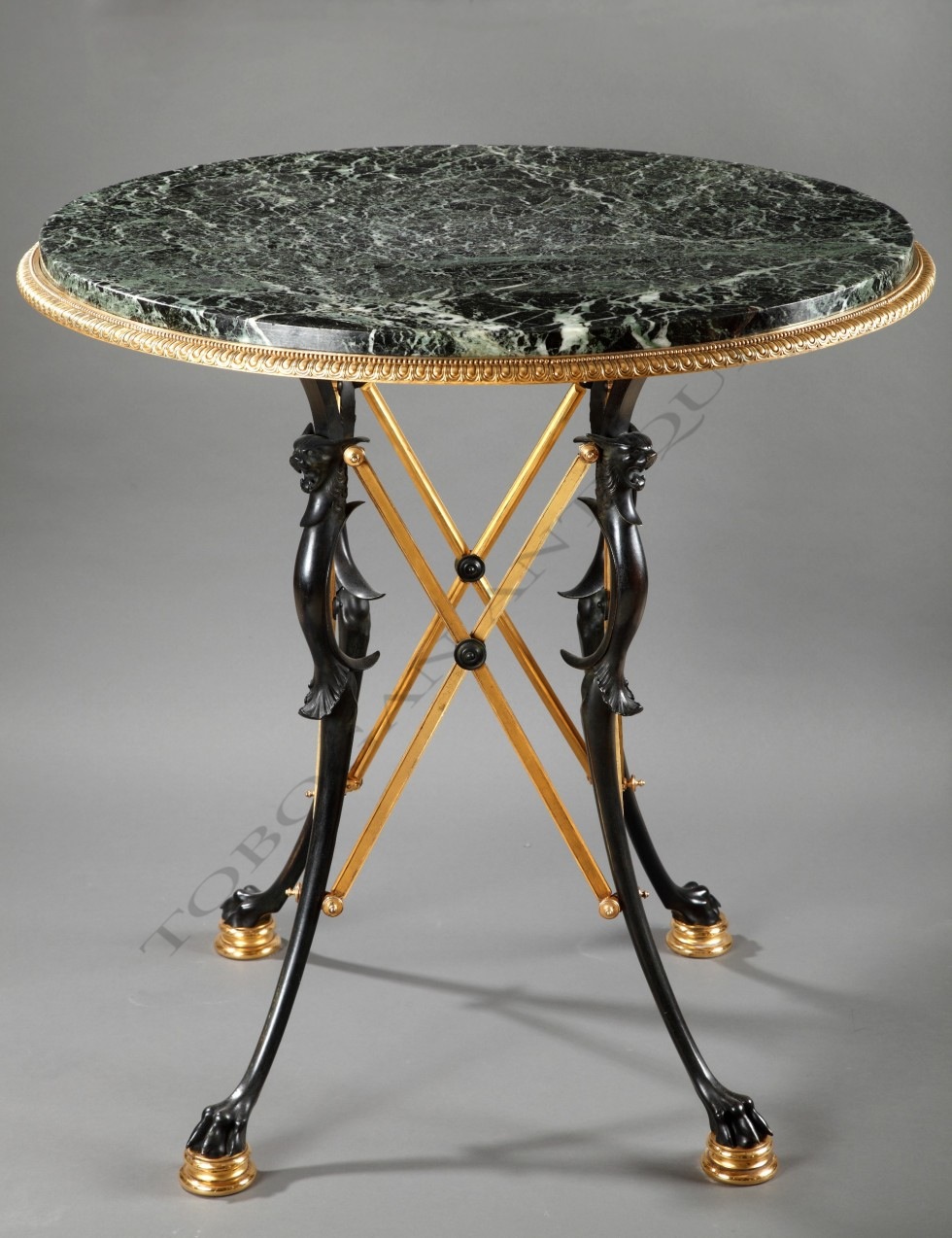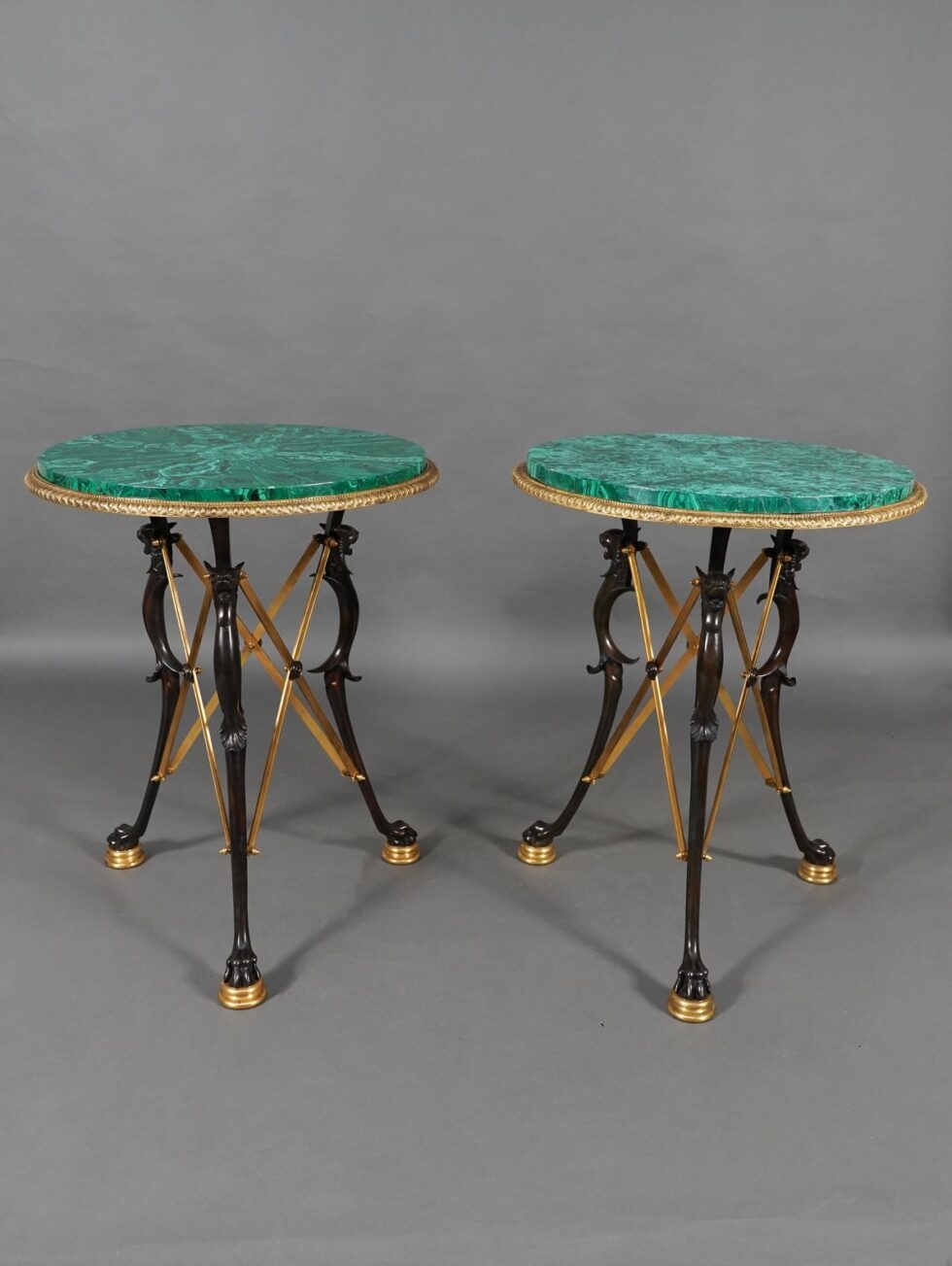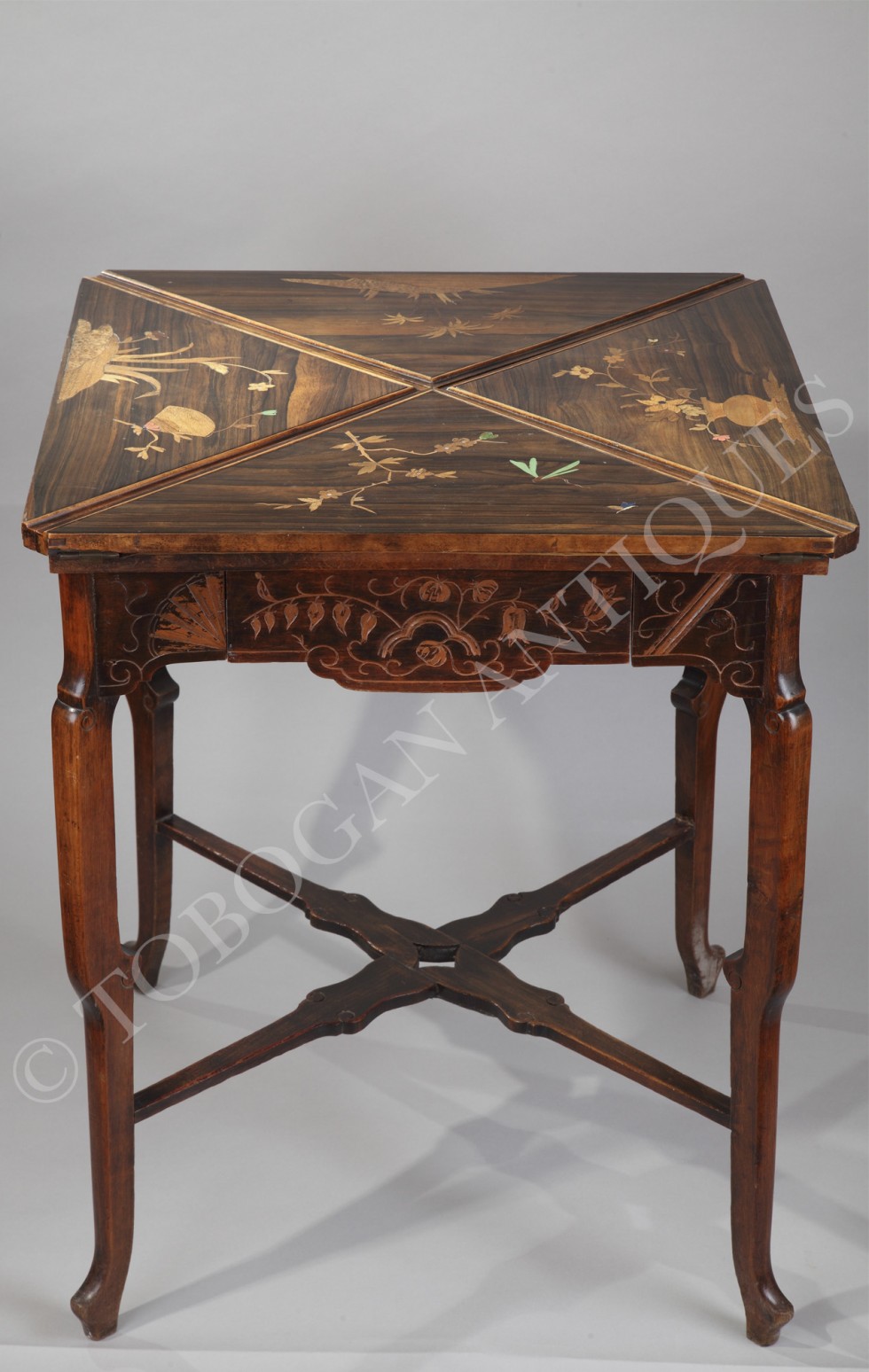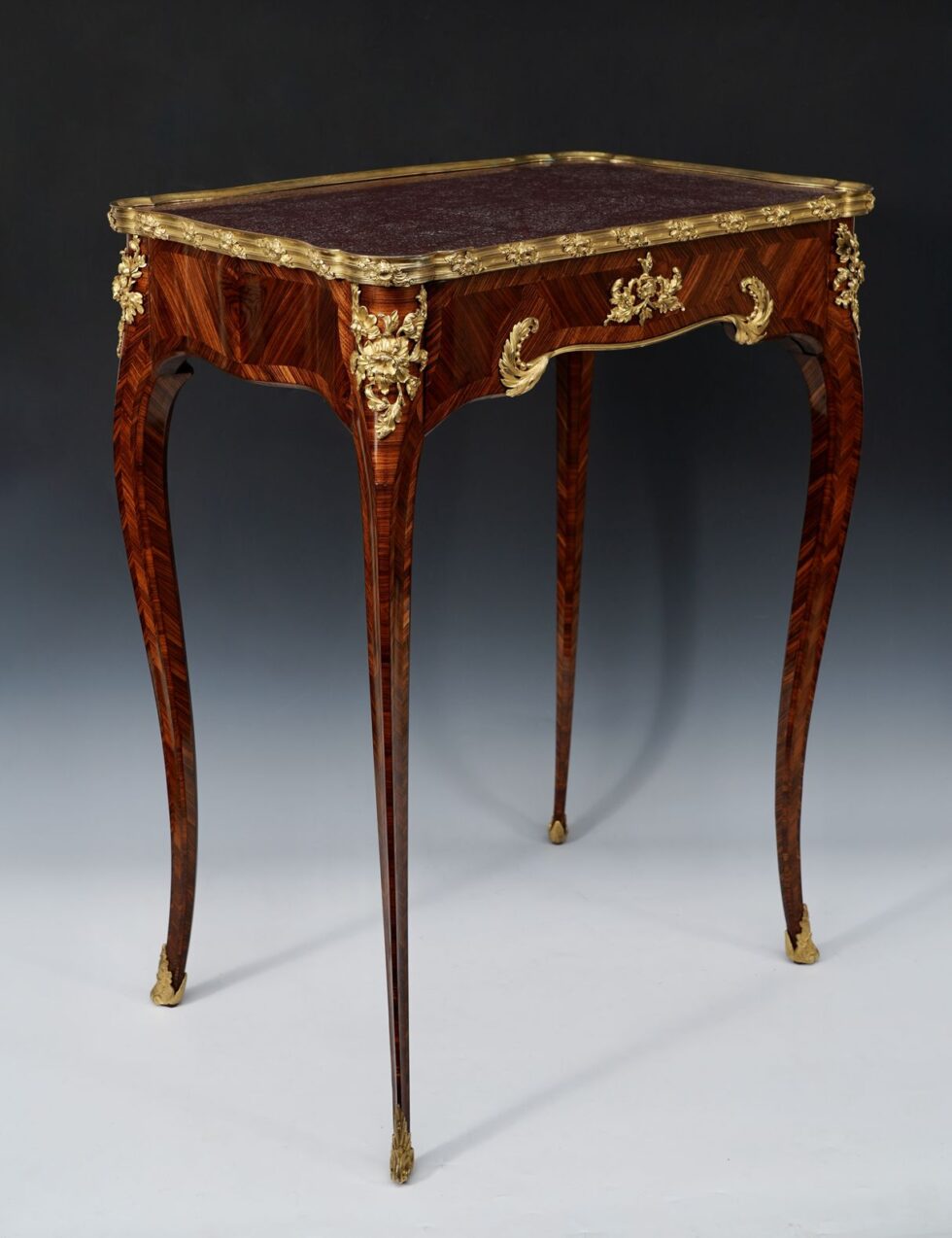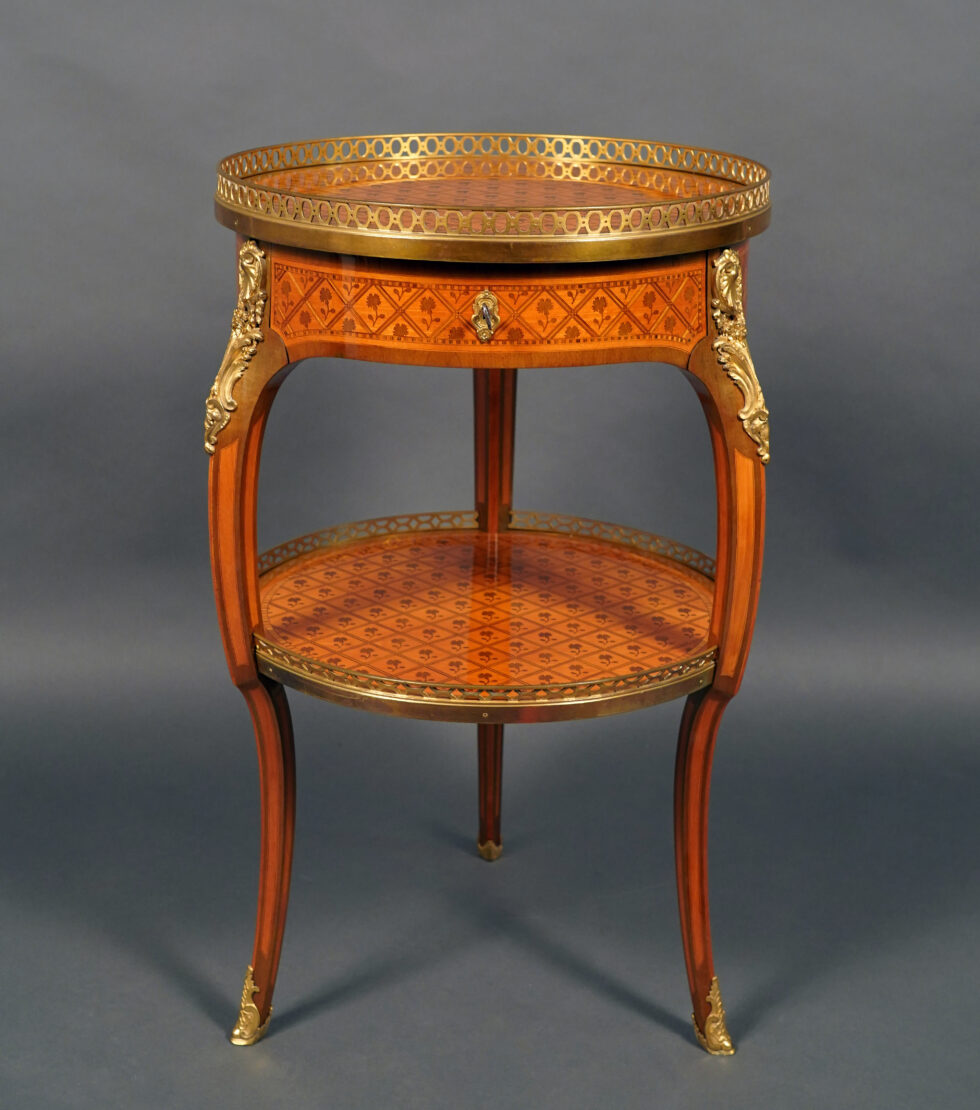Ref. 318
F. Barbedienne
Bronze-caster
(1810-1892)
(attributed to)
A neo-Pompeian Gueridon
France
Circa 1860
Height : 75 cm (29,5 in.) ; Diameter : 61 cm (24 in.)
A tripod gueridon in gilded bronze, decorated with palm-leaves and standing on lion’s feet. The black marble top is decorated with an antique chariot scene and a Greek frieze picked out in red « Pompeian » micro-mosaic.
Similar ornaments were used by the Manufacture of Sèvres for the important dining set known as the « Pompeian set », made of red painted porcelain and delivered to the Prince Napoleon in about 1860 (A part of this set is now exhibited at the Porcelain Museum of Sèvres).
Biography
Ferdinand Barbedienne (1810-1892), the most important caster of bronze pieces of art during the second half of the 19th Century, created and directed one of the principle artistic foundries of his day. Their illustrated catalogues included many diverse objects such as busts, ornemental sculpture (clocks, candelabras, chandeliers) sometimes even life-sized and also bronzes for furniture. Apart from his own production, Barbedienne worked for the most renowned sculptors such as Barrias, Bosio, Clésinger and Carrier-Belleuse.
At the London exhibition in 1851 Barbedienne’s firm won two « Council medals ». At the 1855 Universal Exhibition, he won a medal of honor and eleven cooperator’s medals for the work of his co-workers. The success of Barbedienne’s firm brought him many official commissions, such in about 1860, as Barbedienne supplied bronzes for furniture for the Pompeian Villa of Prince Napoleon, located avenue Montaigne in Paris. Black and ancient red were the dominant colors in its decor, as it was used for the top of this gueridon. At the 1867 Universal Exhibition in his capacity as member of and speaker for the Jury, he was non-contestant, but exhibited nevertheless with great success some of his great pieces. Barbedienne was made an officer of the Légion d’Honneur in 1867 and Commander in 1878 when he was compared with « a prince of industry and the king of bronze casting ». His glory did not decline with the passage of the time for at the Universal Exhibition of 1889 the critics thanked Barbedienne for the example he set for other bronze-casters by the perfection of his bronzes.
Bibliography
« L’Exposition universelle de 1889 : l’exemple de Barbedienne », Catherine Chevillot, in Revue de l’Art, 1992, n°95.
Catalogue de l’exposition : « L’art en France sous le Second Empire », Grand-Palais, Paris 1979.
Catalogue de l’Exposition Universelle, les Beaux-Arts et les Arts décoratifs, t. I : l’Art moderne, Paris, 1878.
Catalogue de l’Exposition Universelle, les Beaux-Arts et les Arts décoratifs, Paris, 1889.
Contact us
Tobogan Newsletter
If you want to be up-to-date with our new acquirings you can sign up to our newsletter.

